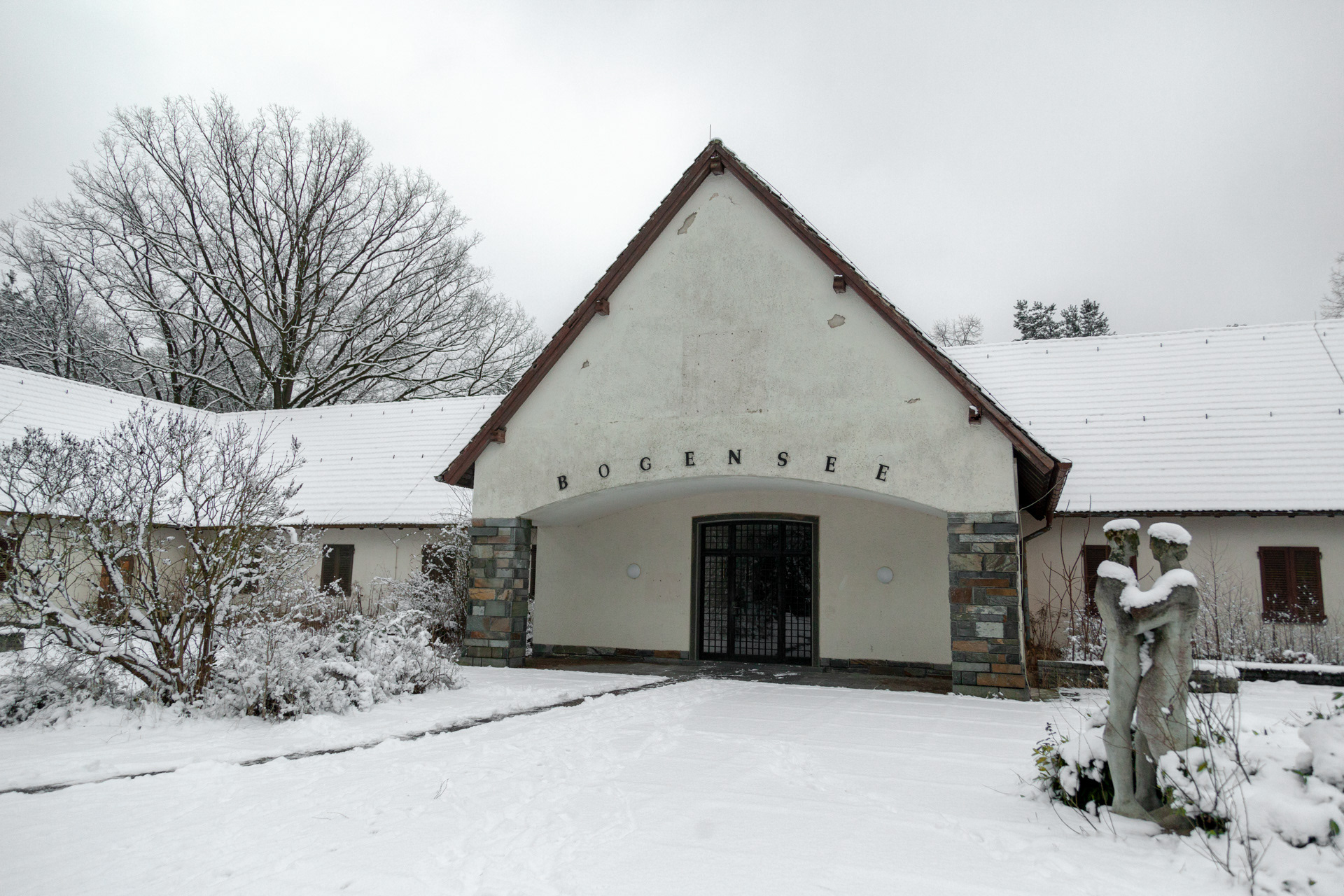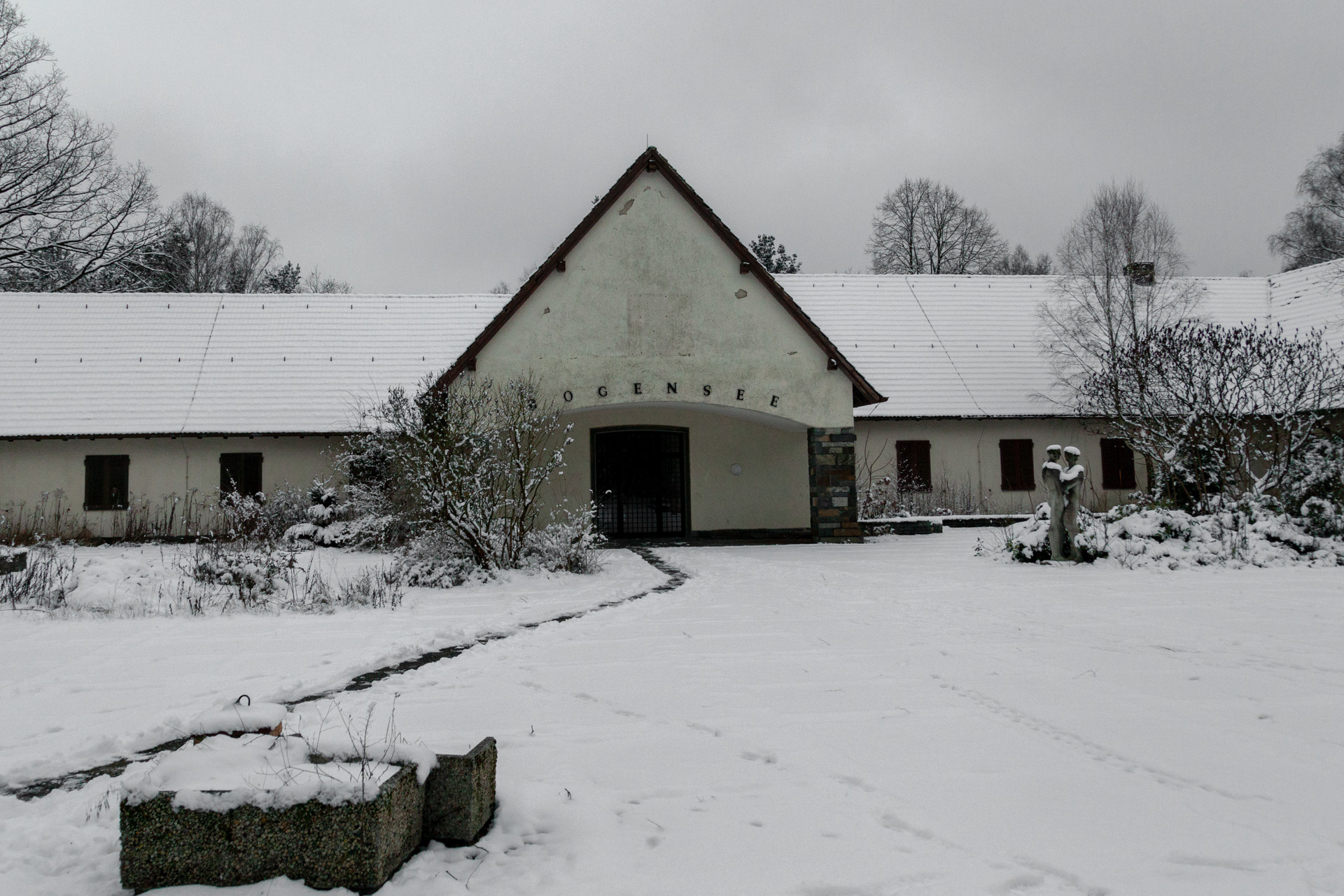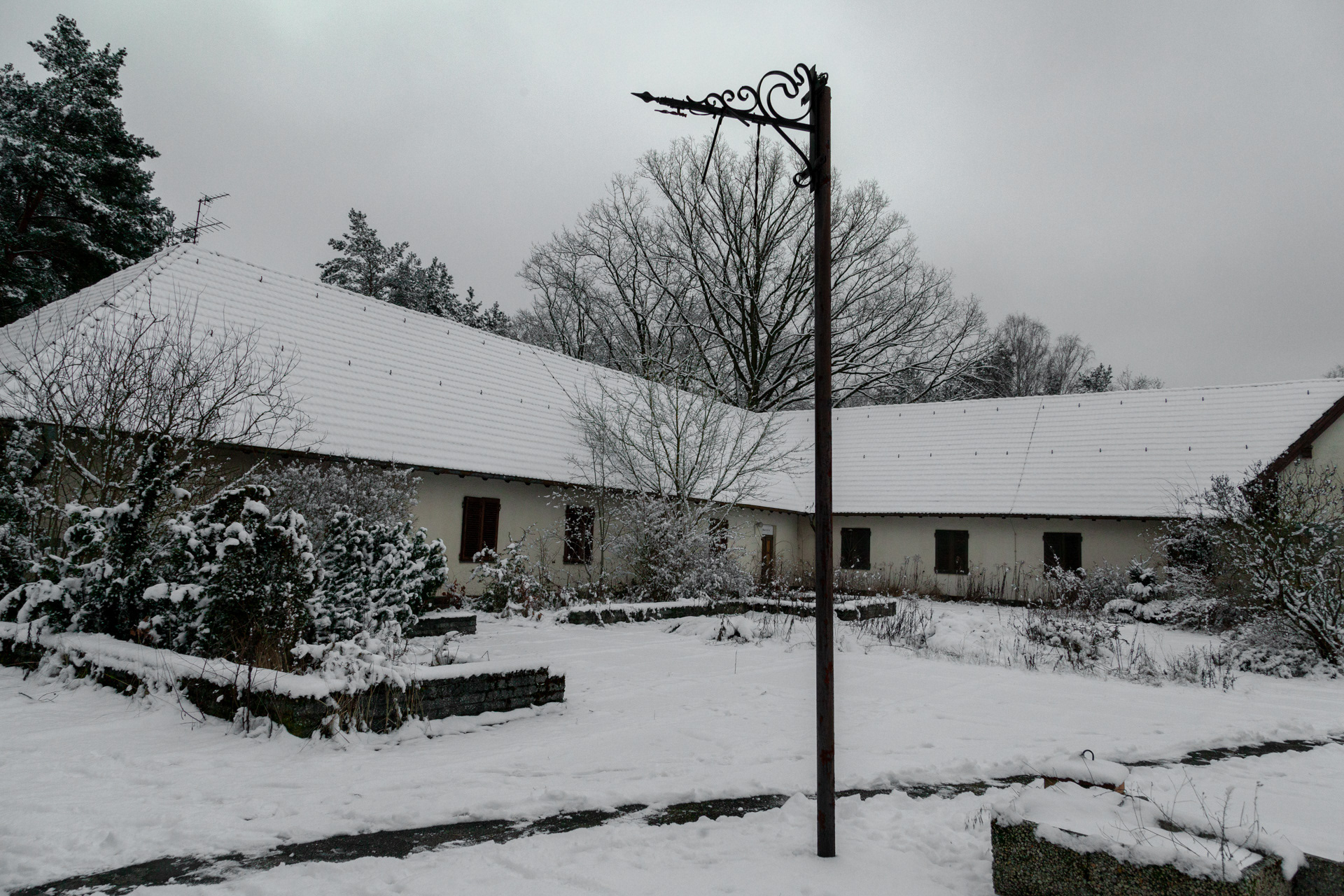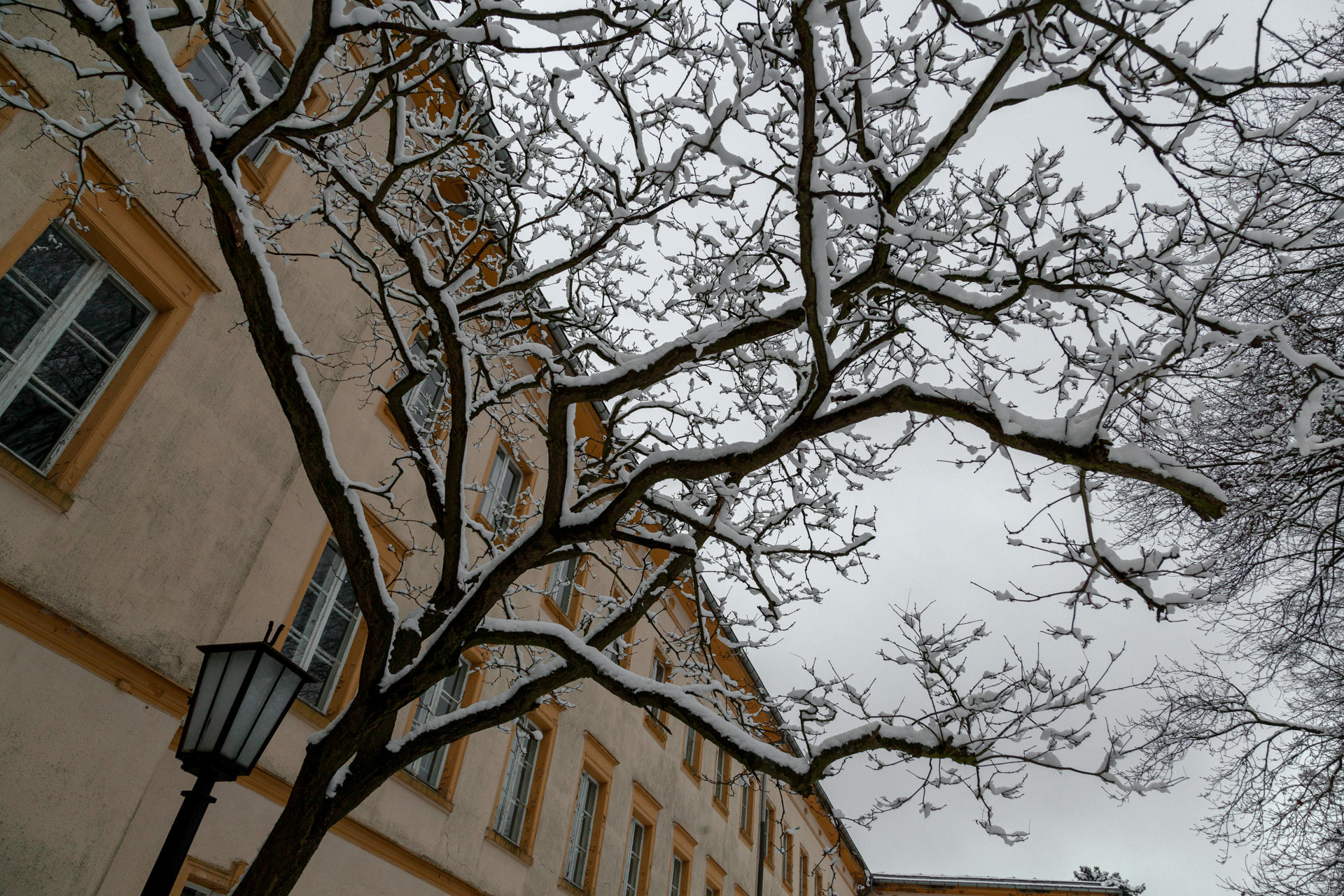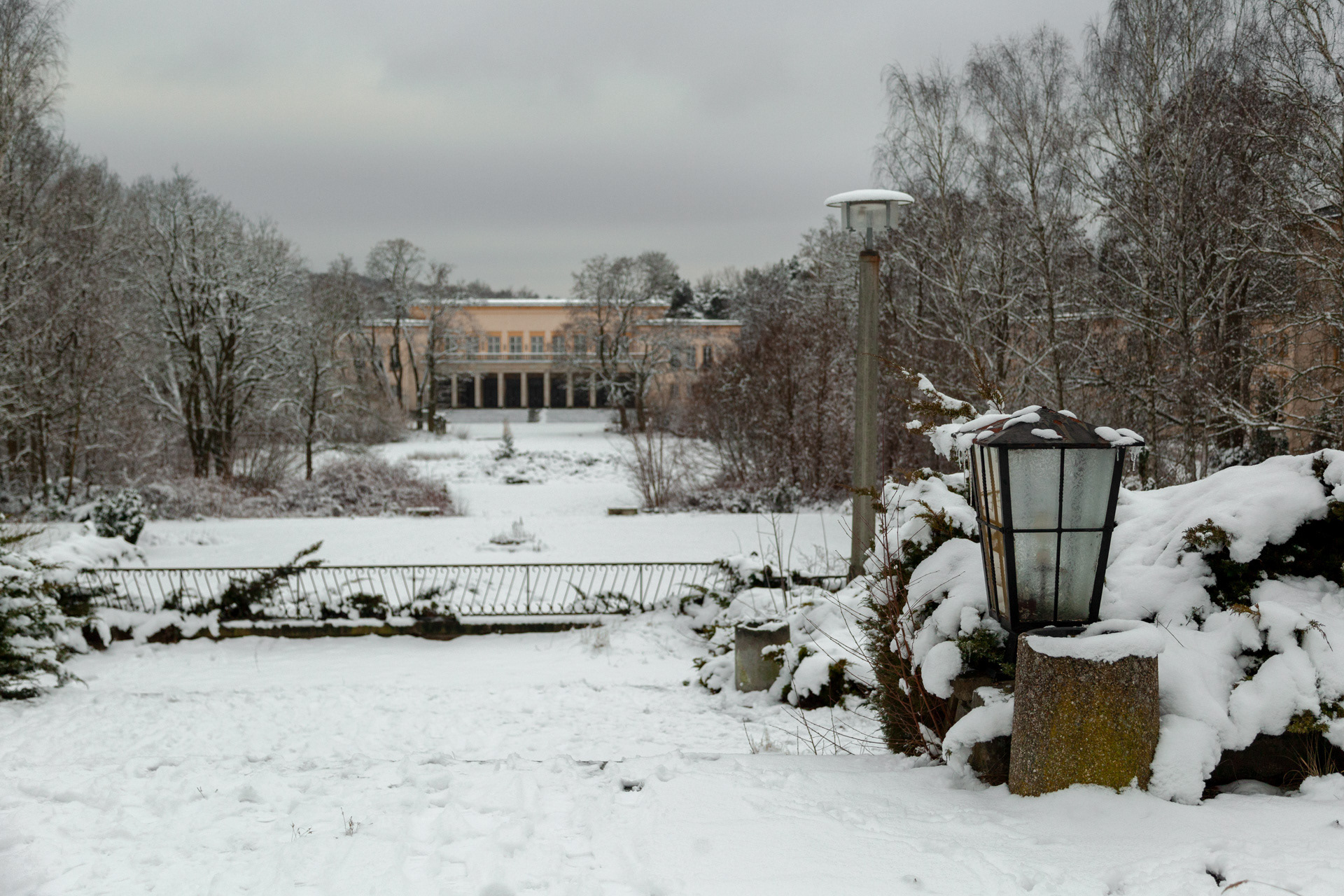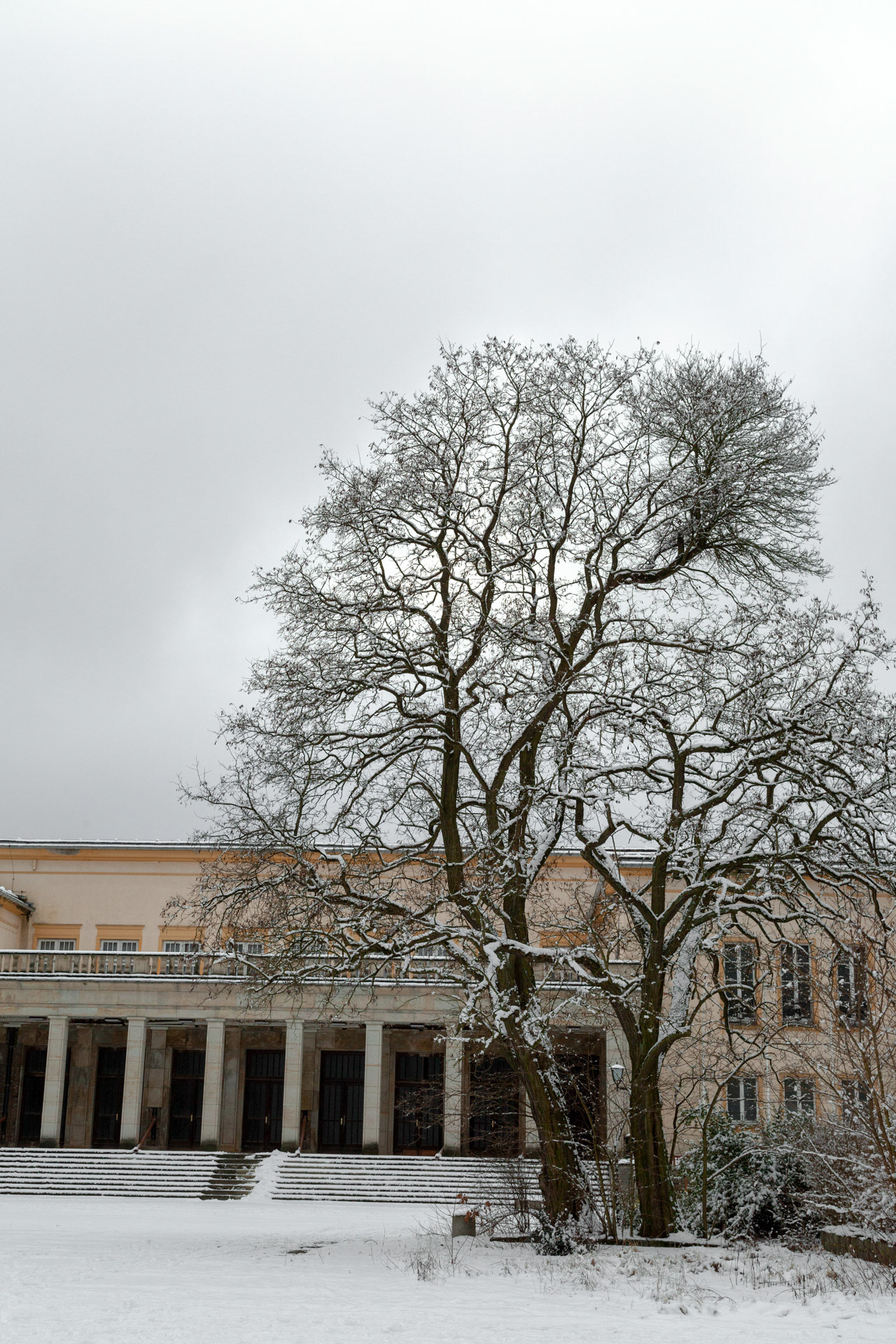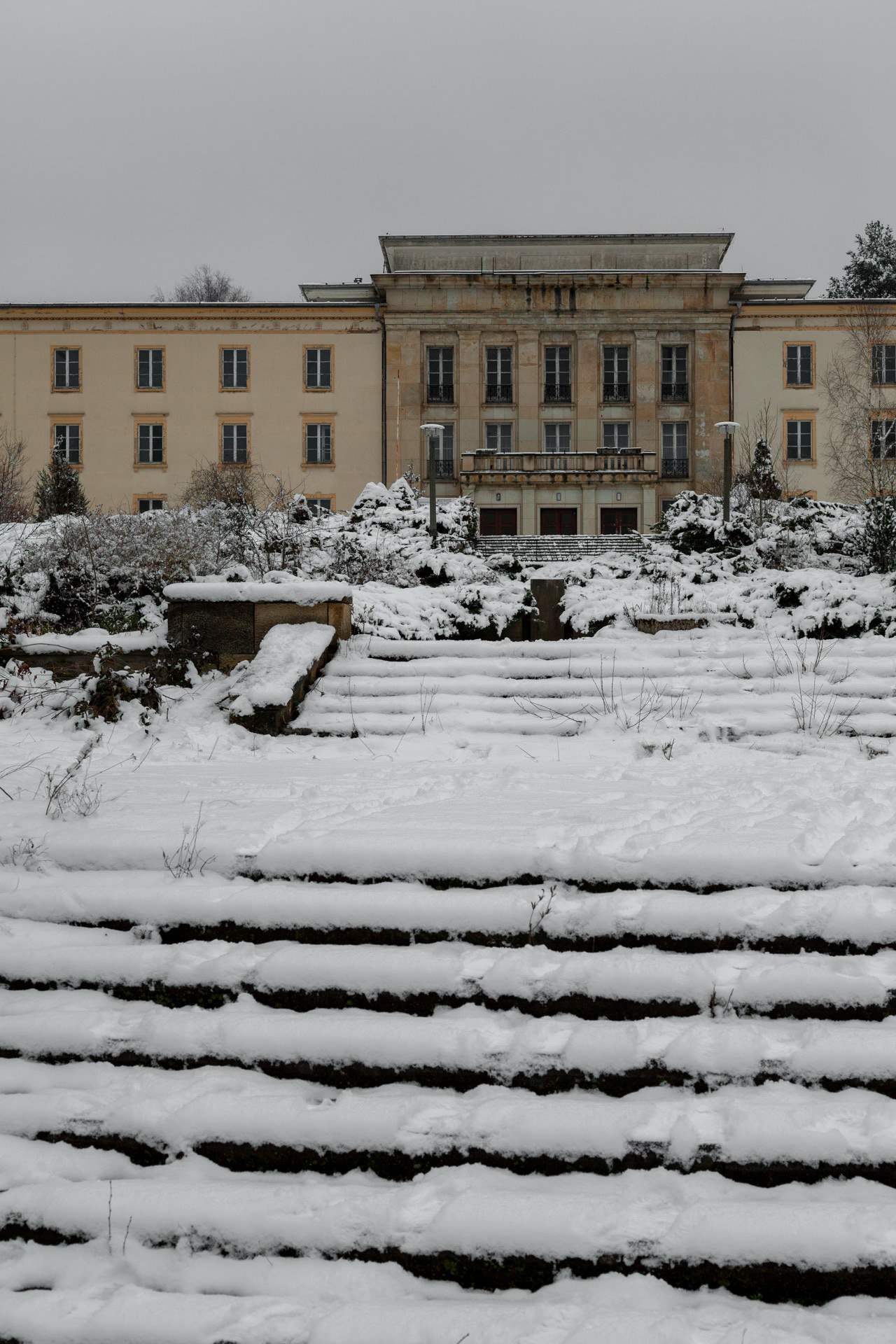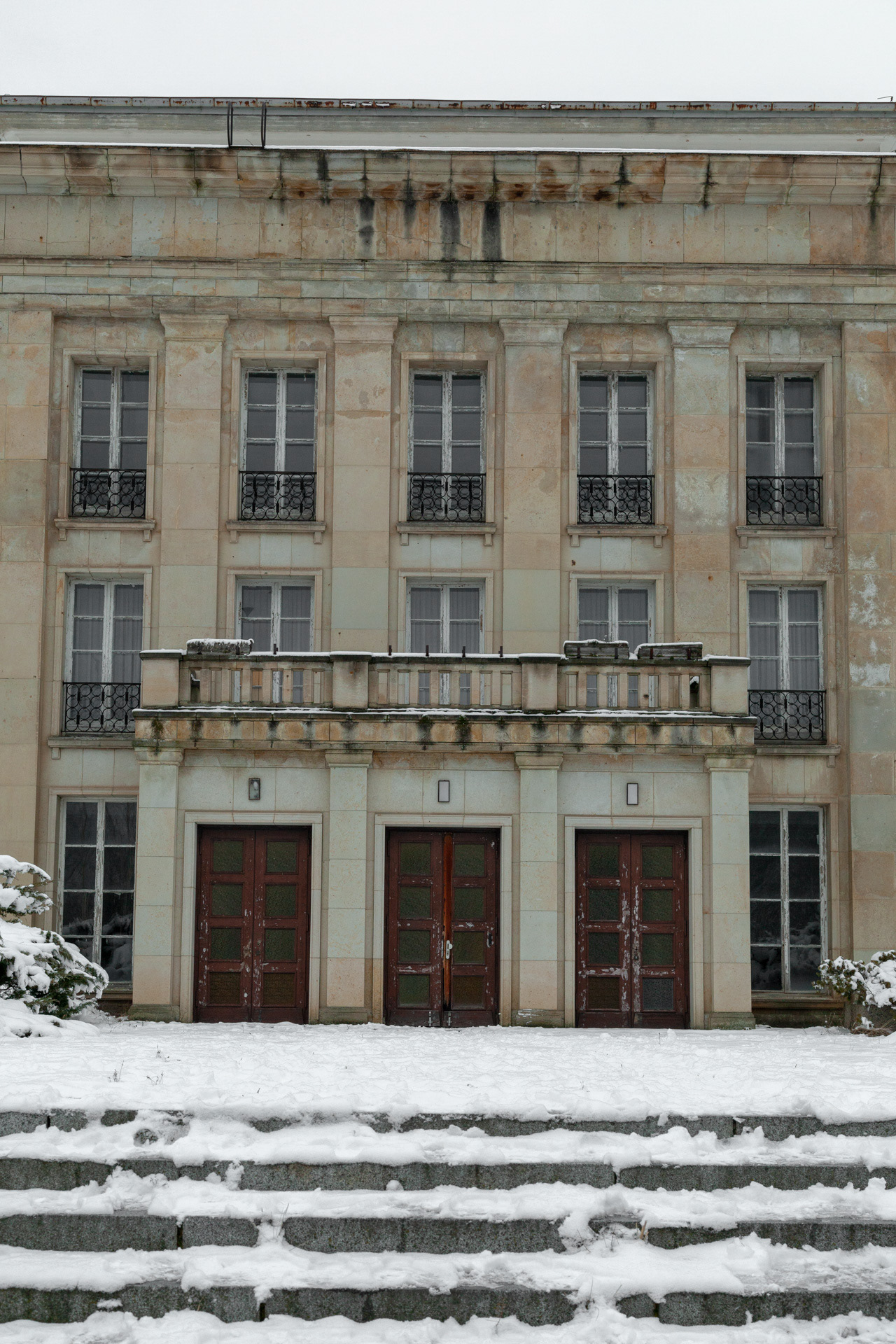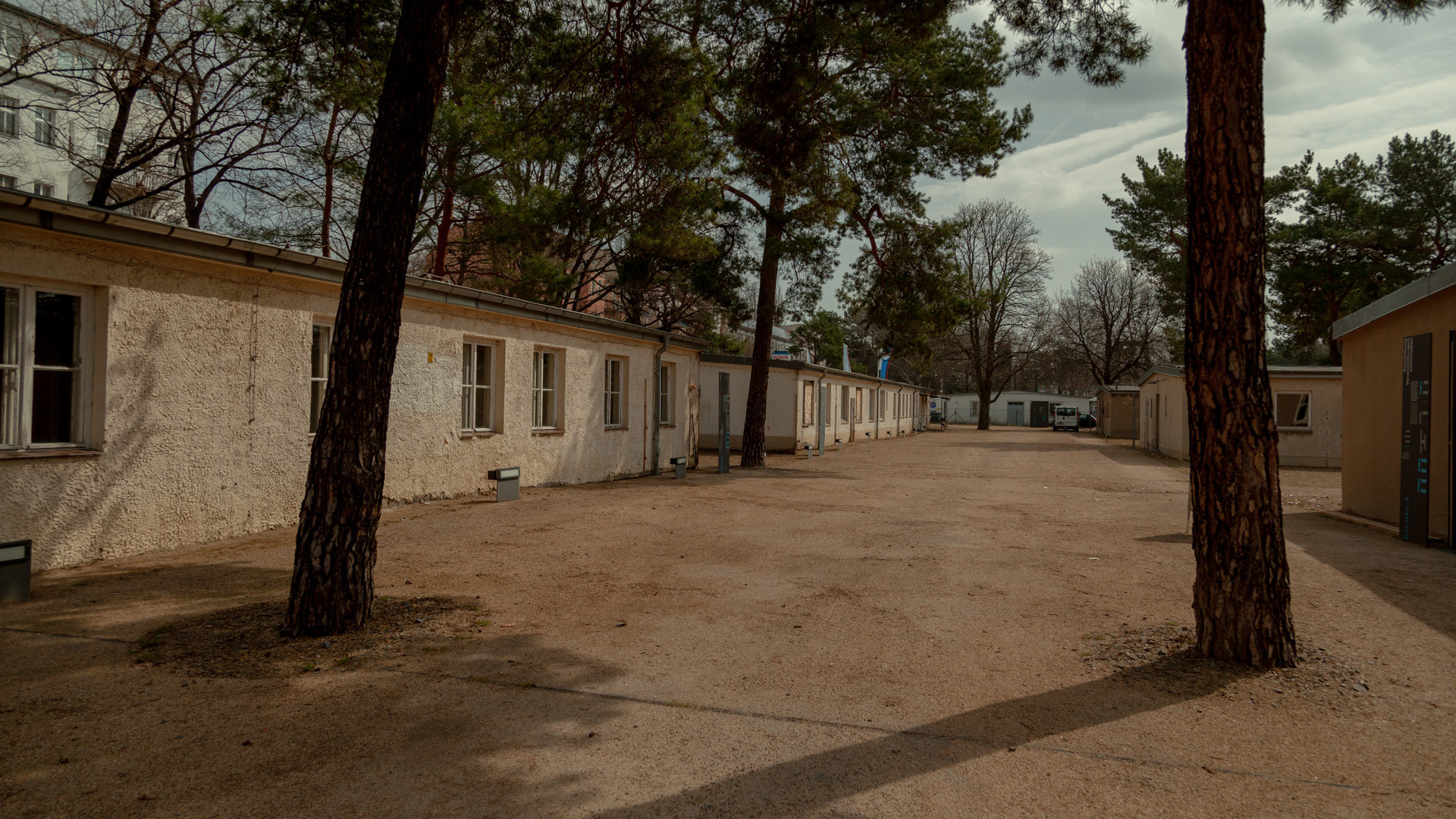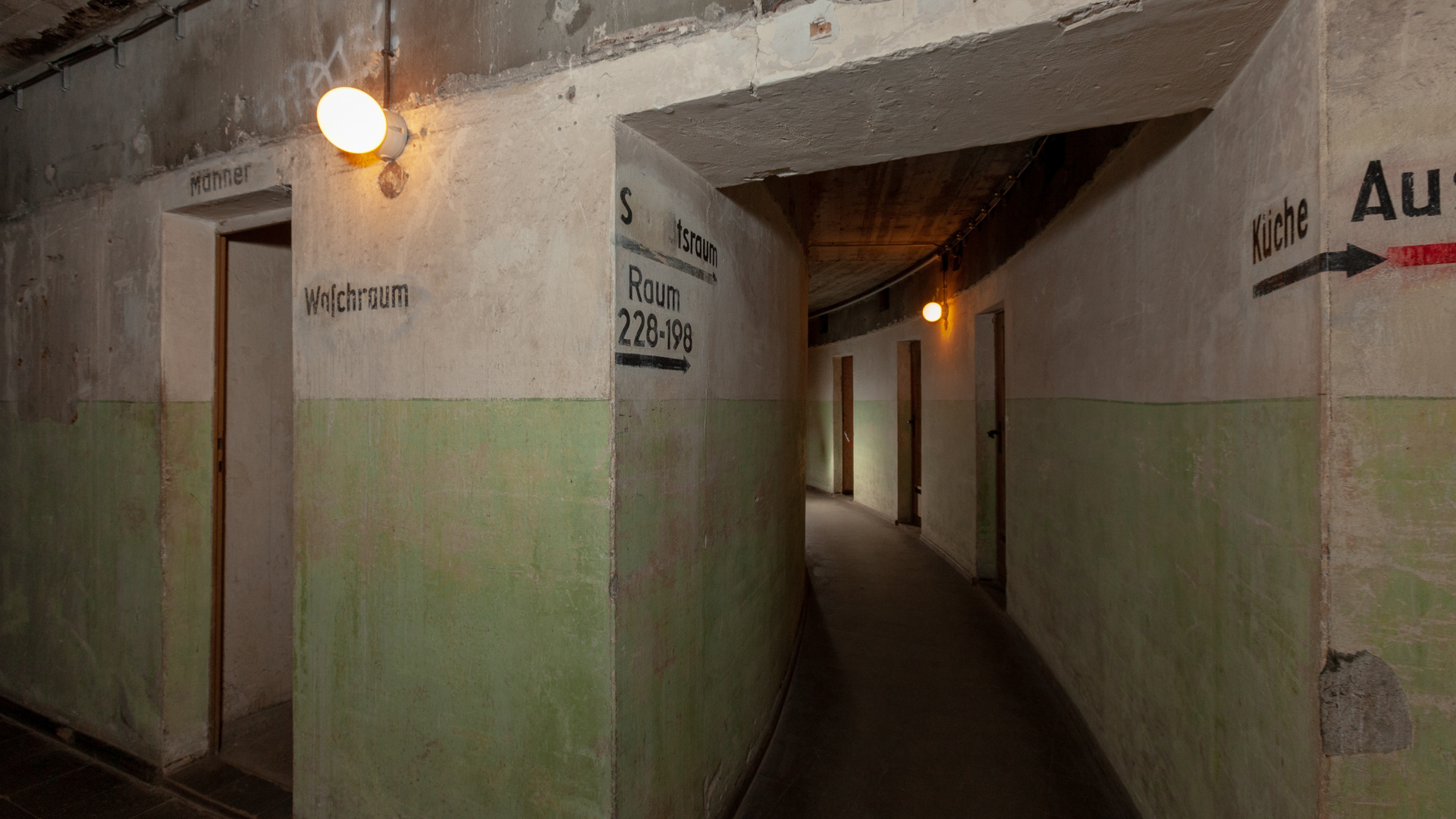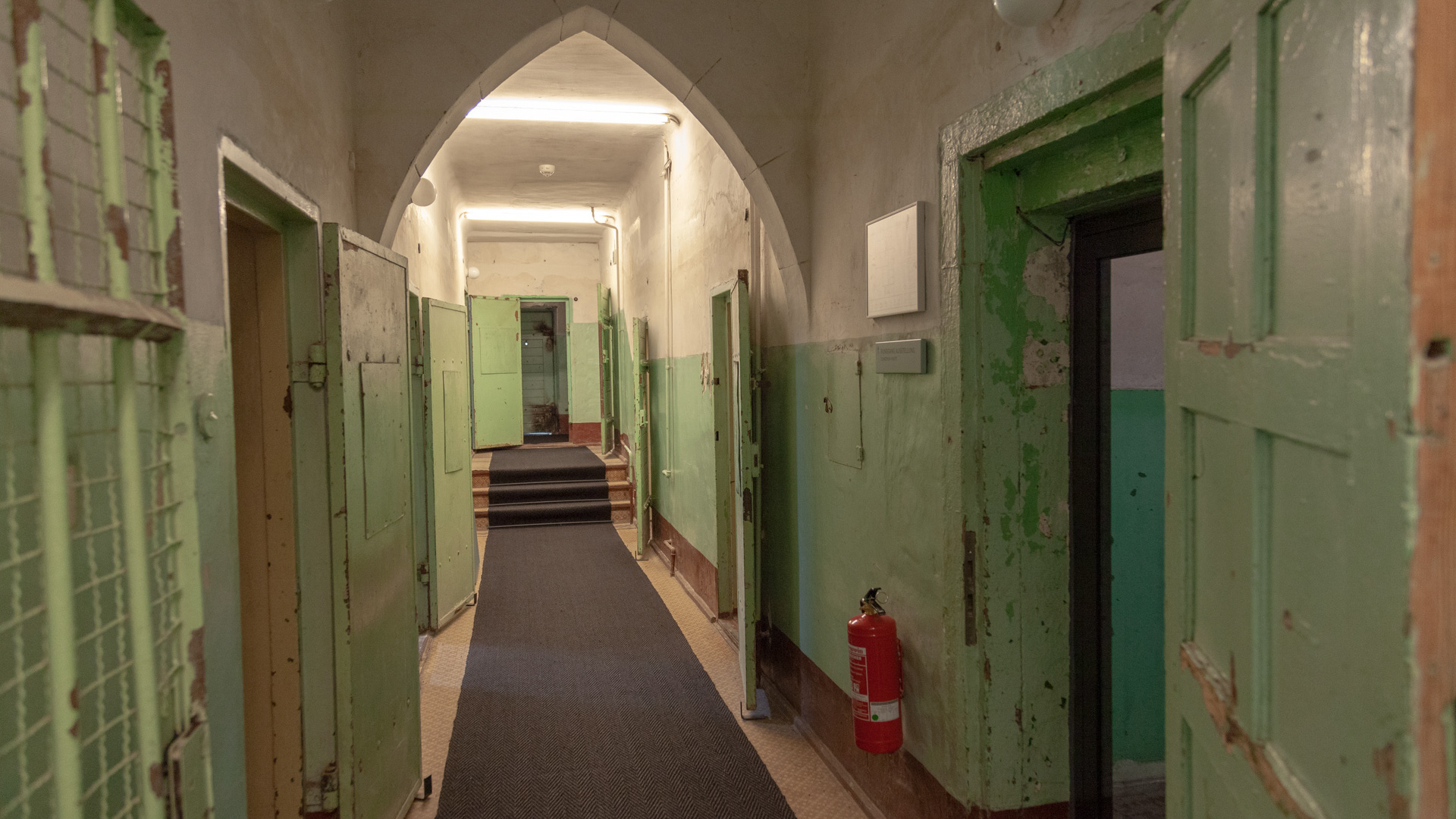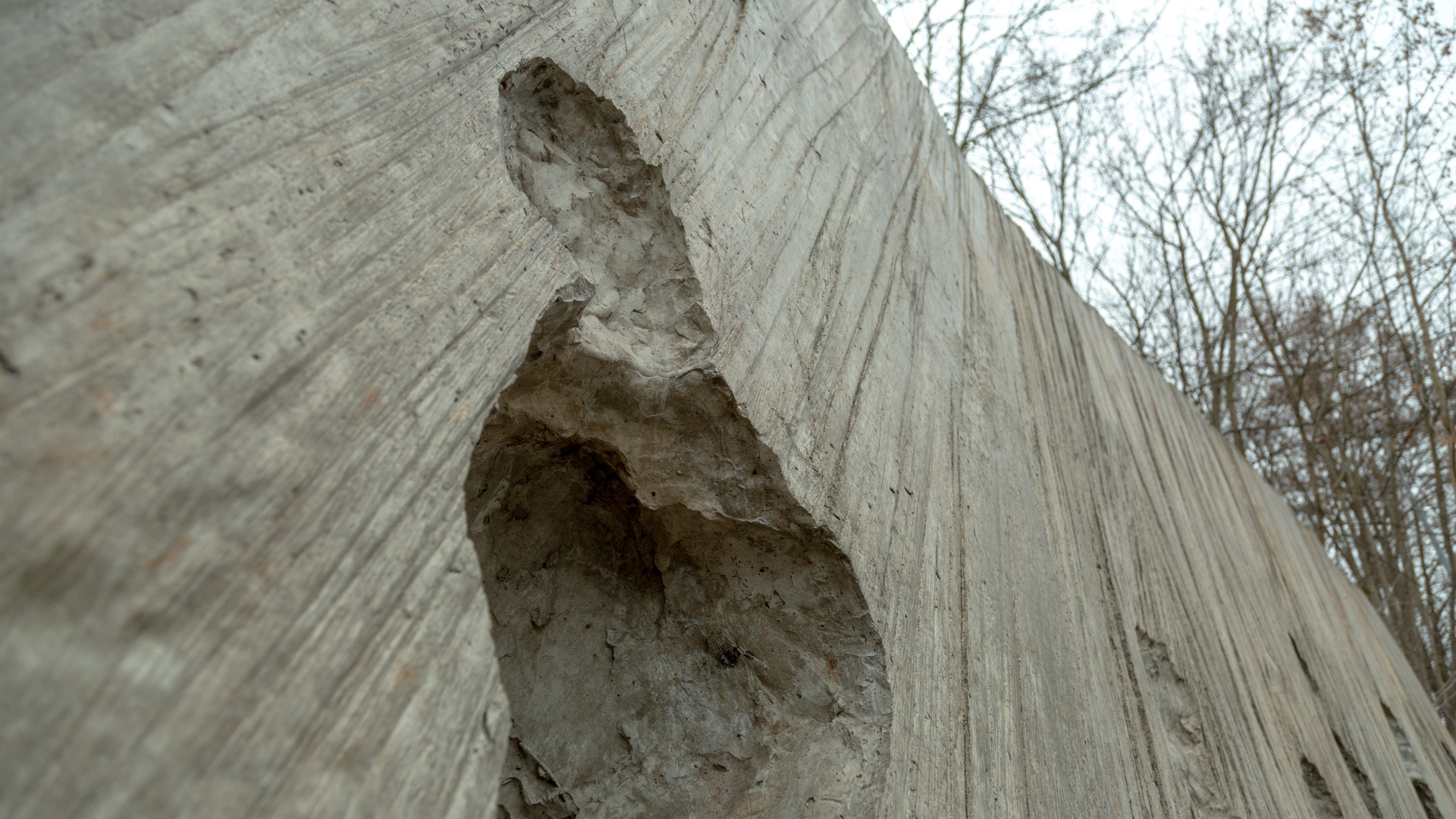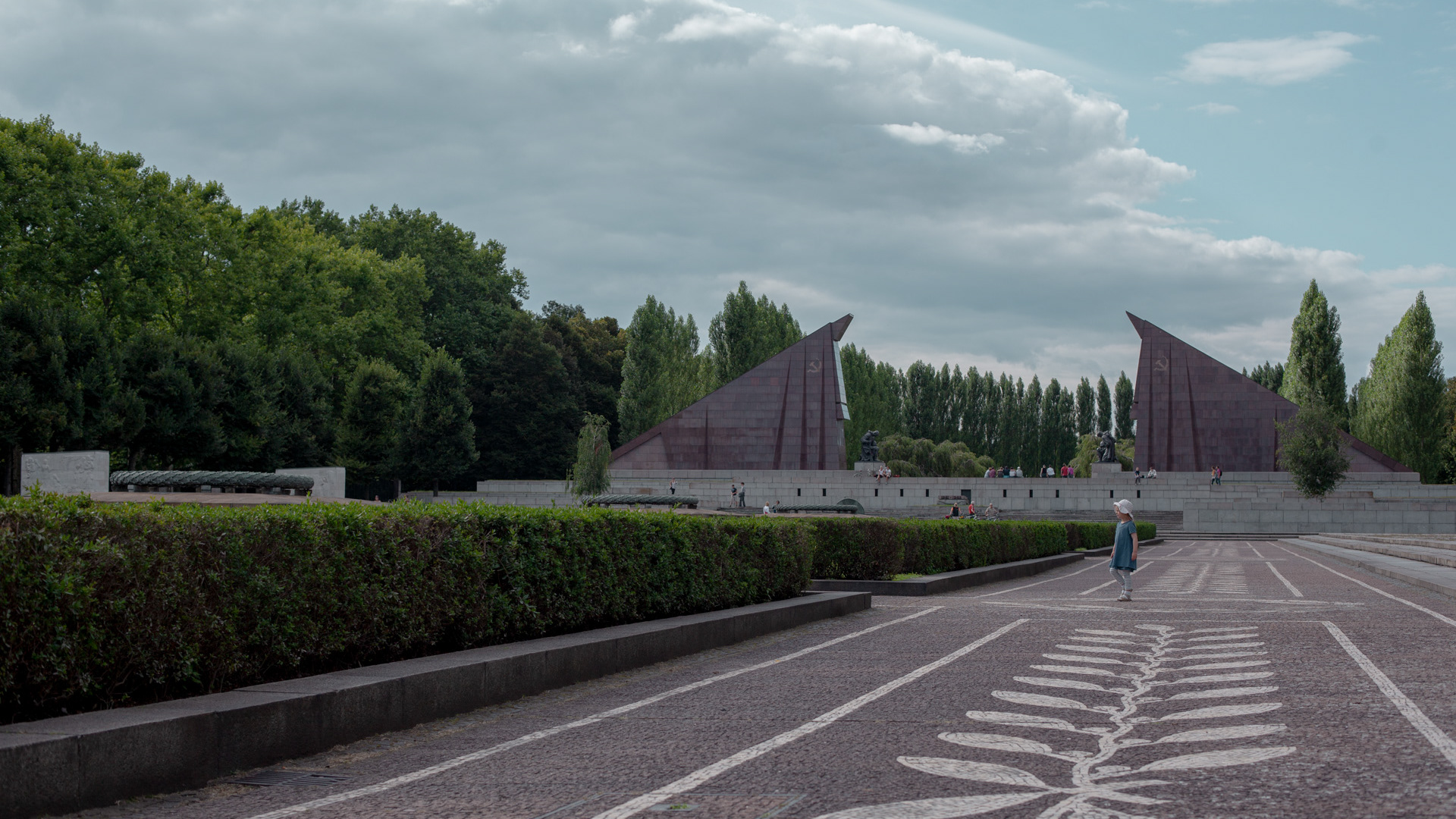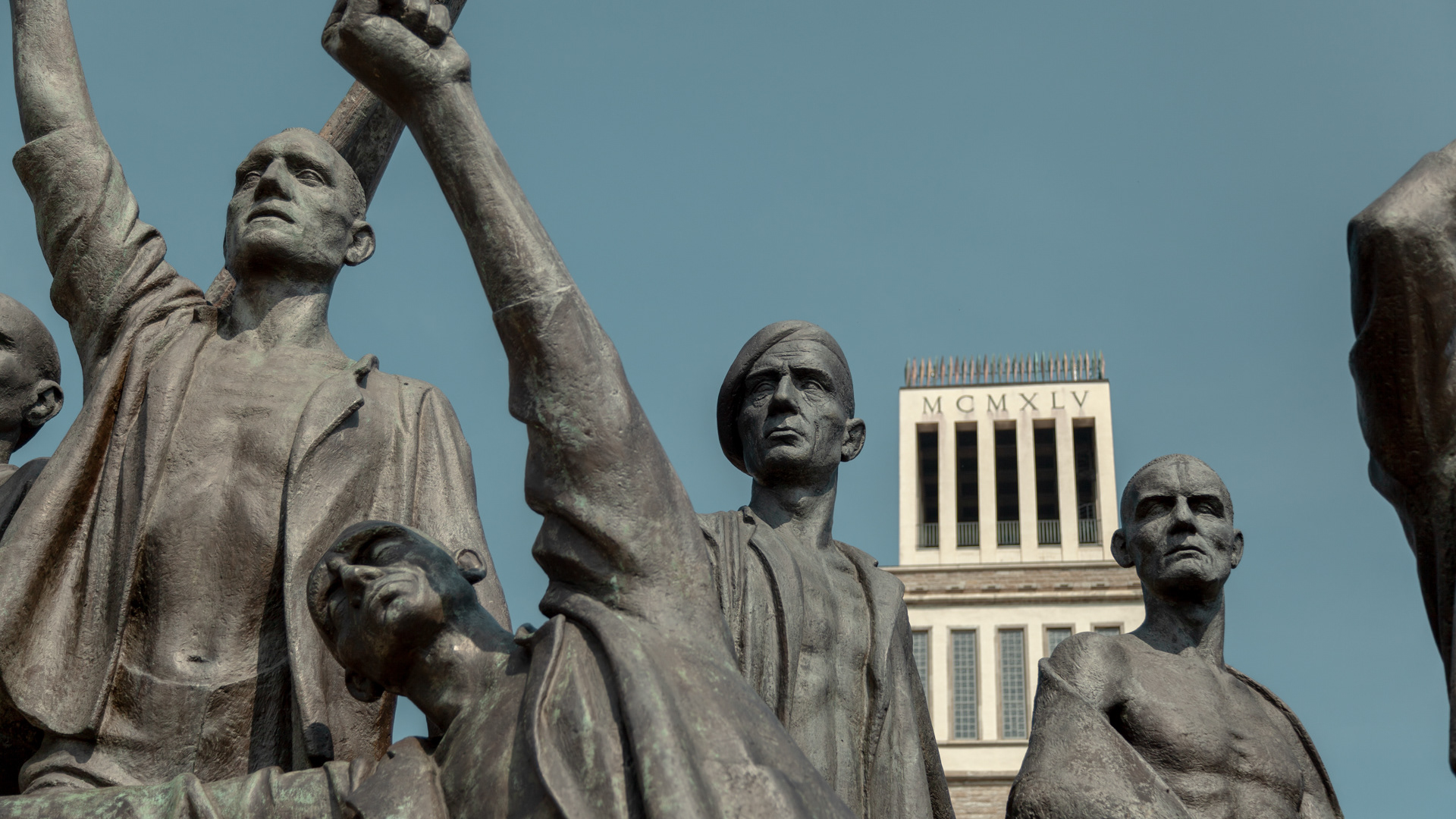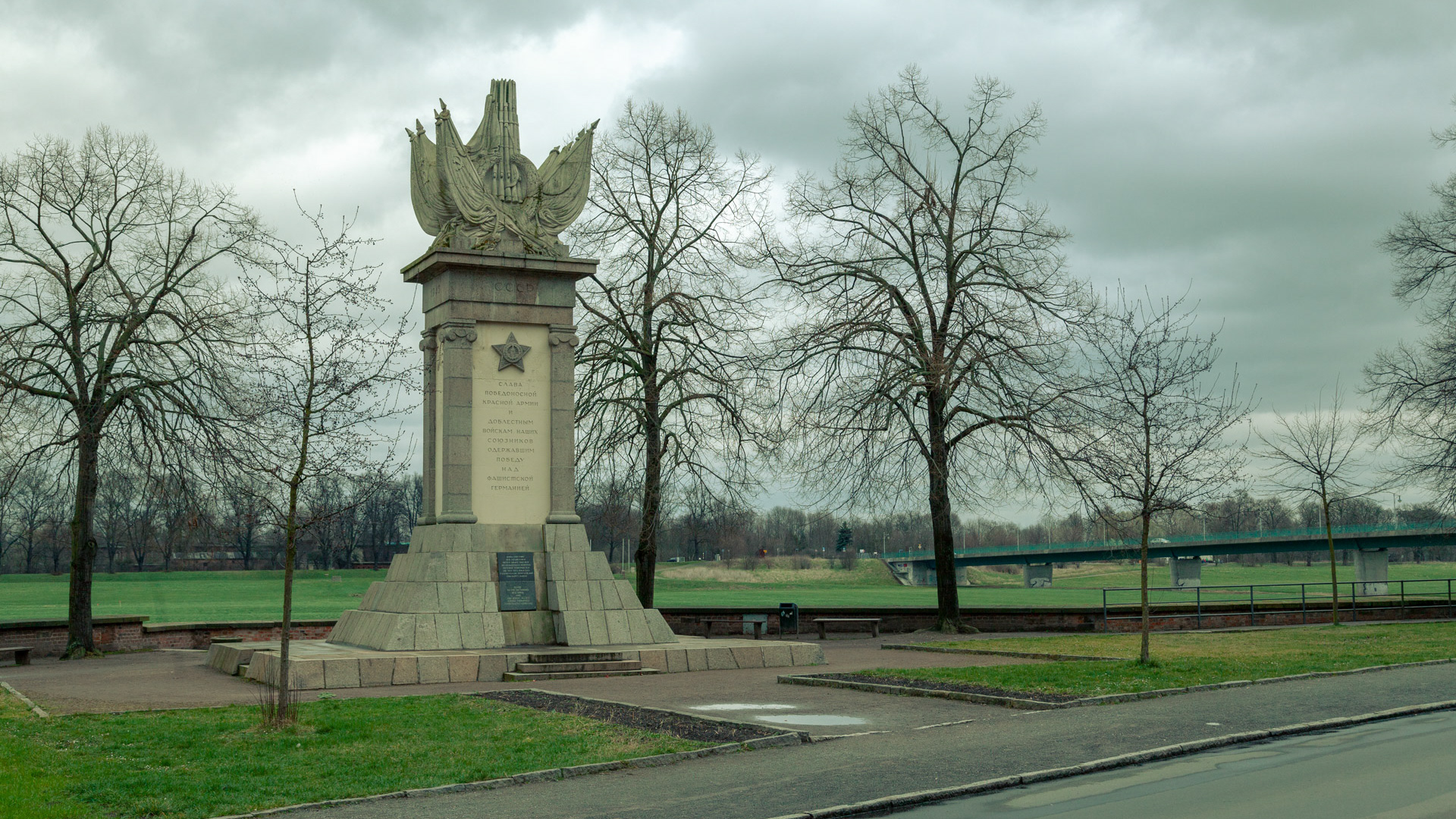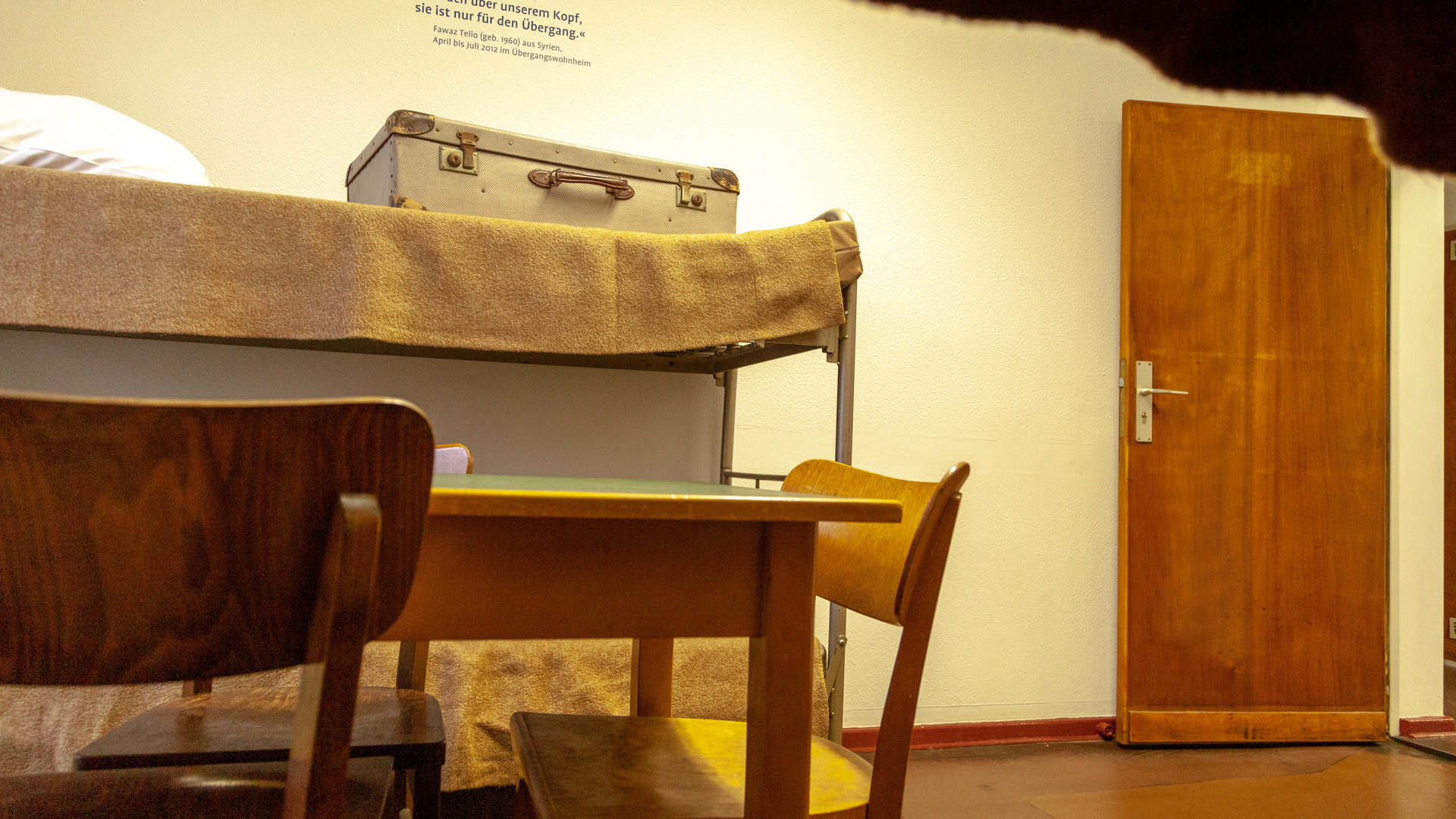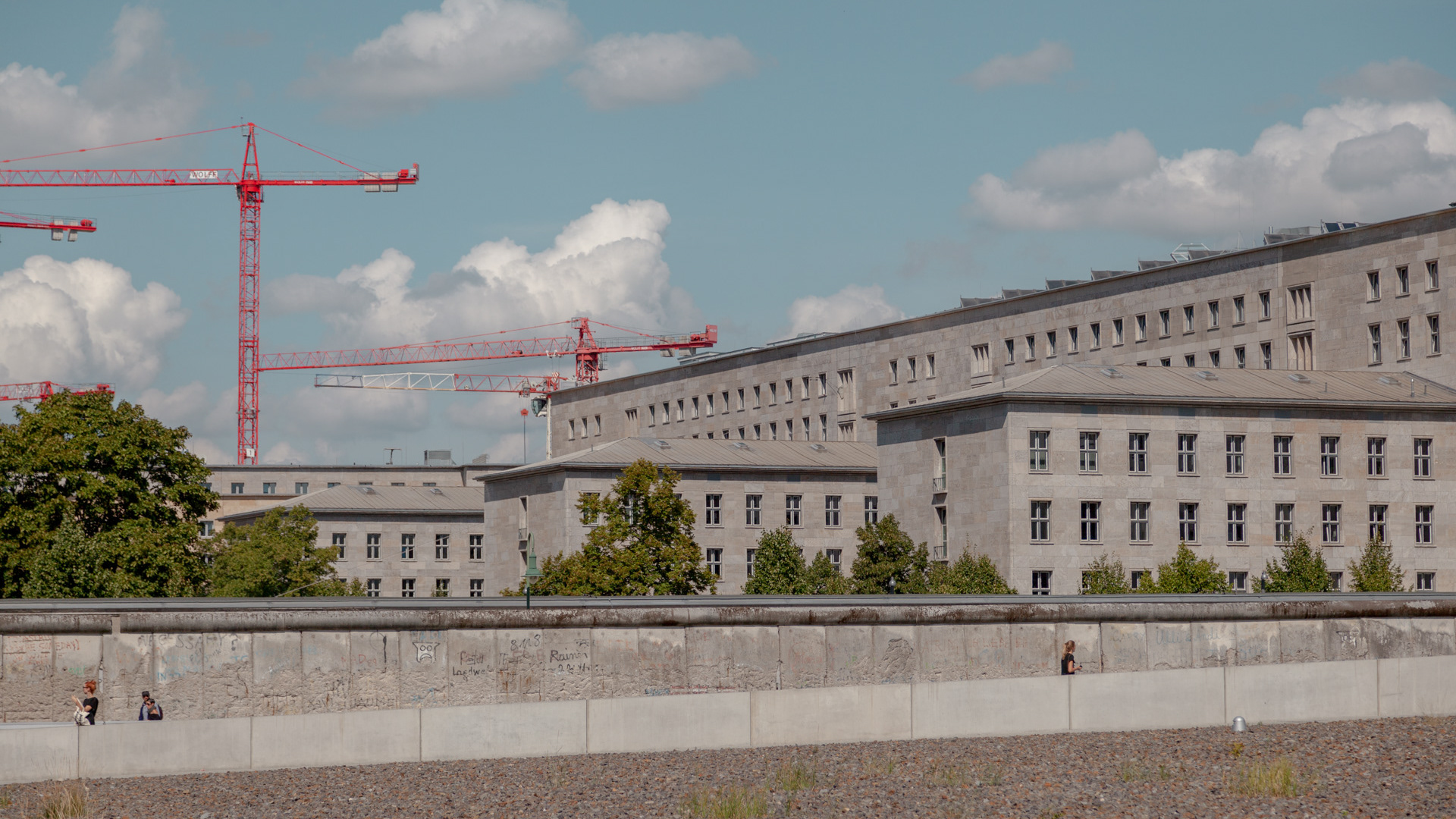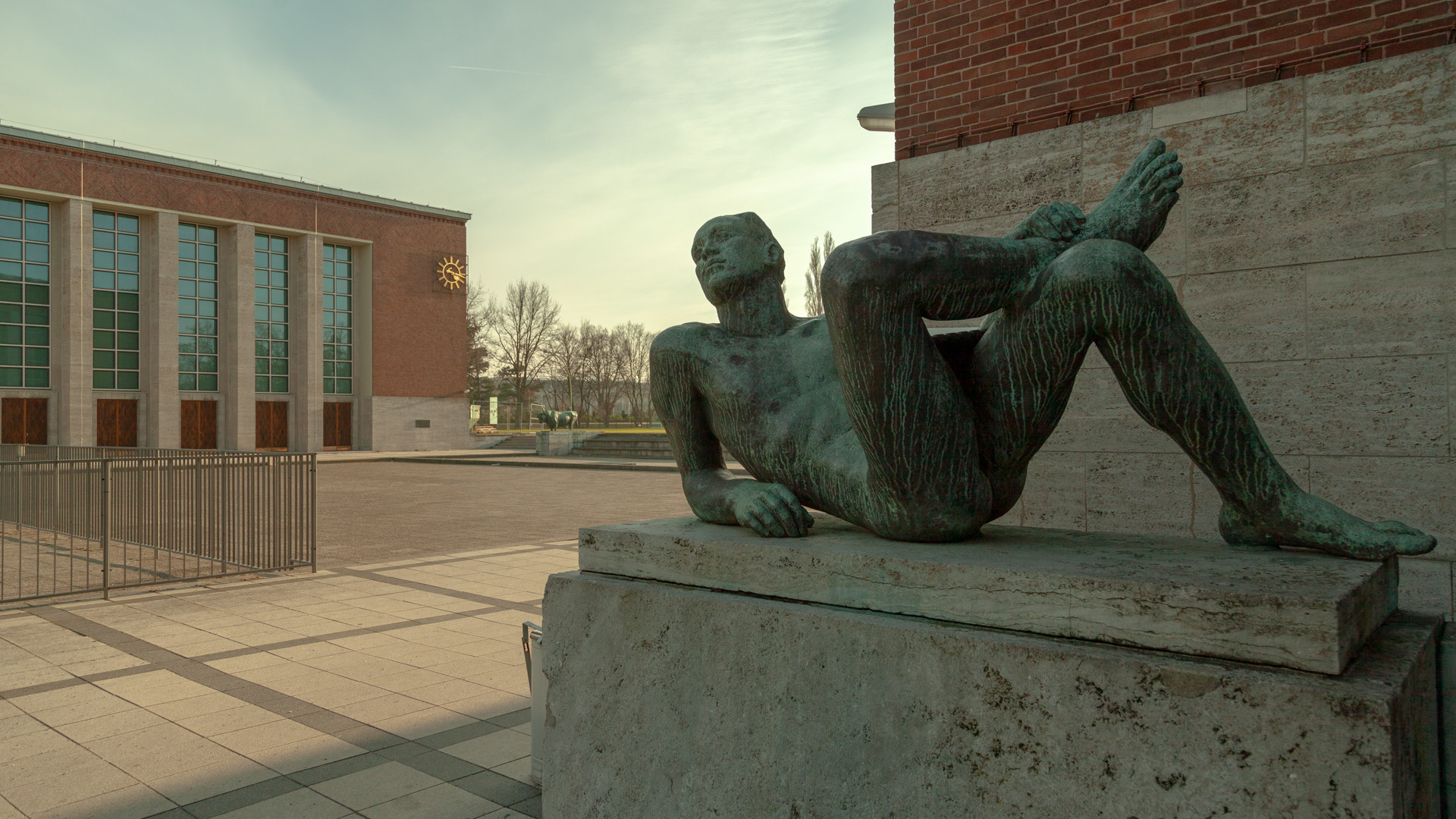Göbbels, the Nazi propaganda chief, had one villa on the Schwanenwerder island and a country house near Bogensee. In DDR times, it served as FDJ University, since 1990, the site falls into a deep slumber.
The house represents everything else, than what people think of as the country home of a Nazi size: simple and modest.
The house represents everything else, than what people think of as the country home of a Nazi size: simple and modest.
The other buildings, part of the FDJ Youth College, are more impressive, still in good conditions.
The Red Army conquered the country in almost undamaged. As early as 1945, the FDJ where he set up a youth academy. On neighboring properties since the fifties gradually more grandiose buildings were built in Stalinist style for this university by the architect of the East Berlin splendid boulevard Stalinallee, Hermann Henselmann. After the Fall of the Berlin Wall they tried to market the area as a hotel complex, which failed, however.
The Red Army conquered the country in almost undamaged. As early as 1945, the FDJ where he set up a youth academy. On neighboring properties since the fifties gradually more grandiose buildings were built in Stalinist style for this university by the architect of the East Berlin splendid boulevard Stalinallee, Hermann Henselmann. After the Fall of the Berlin Wall they tried to market the area as a hotel complex, which failed, however.
The legacy of the FDJ (Freie Deutsche Jugend) is another unsolved story of division. In the West, it was banned in 1954, owing to suspicions of remilitarization and communist activities. In the East, meanwhile, the FDJ was formed into a state youth association as one of the ideological pillars of socialism, with its elite school in Waldhof am Bogensee. Since Reunification there is a debate if it is legal or illegal to wear the symbols of the FDJ.
